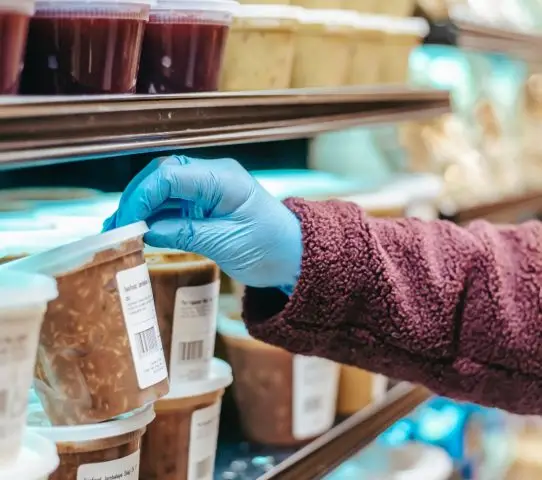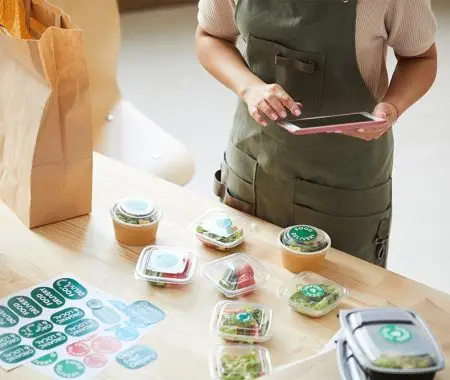Food labels can be deceiving. They can also be helpful, depending on how you look at them. They’re there to help you make informed decisions about what you eat and how it fits into your overall diet. But they can also trick you if you’re not careful. Even the most well-intentioned label reader can miss something important and that can lead to an unhealthy purchase or unnecessary calorie load. Here are some tips that will help you read food labels without being tricked.
Read The Label Before You Shop
Reading labels before you shop is a good idea if you want to avoid being misled. It’s especially important to know how ingredients are labeled when it comes to superfoods and dietary supplements. A label that reads “organic” doesn’t always mean that it’s organic. It can indicate that only the soil was used, not the plant. It’s also important to know how manufacturers label foods that contain ingredients that come from animals (like eggs or milk).
Know What To Look For
There are a few things to keep in mind when you’re reading food labels. Here are a few examples:
- Calories – All calories are not created equal. Some will help you stay energetic and focused throughout the day, while other calories will lead to weight gain. Calories are listed on food labels as the amount of energy the food gives you. If you’re trying to lose weight or maintain your weight, be sure to keep an eye on them as you’re trying to build a better and healthier diet.
- Sugar – There’s a lot of sugar in processed foods. Sugar is listed on food labels as either “total sugar”, “added sugar”, or “sugars”. The remainder of the ingredients in a portion of food can also help you get a better idea of how much sugar it contains.
- Sodium – Sodium is usually listed as “salt” or “sodium”. It’s important to keep an eye on your sodium intake when you’re eating a healthy diet. Too much salt can cause water retention and increase blood pressure, which could increase your risk of a heart attack or stroke. A diet that’s rich in sodium could increase your risk of developing high blood pressure, diabetes, and kidney disease.
Learn The Lingo
Here are a few key terms you’ll see on food labels:
- Sugar: Sugar, fructose, or honey is the name of a plant-derived, monosaccharide that is present in many fruits. Sugar is listed as a gram per serving and per 100g or mL serving.
- Fat: Fat is a lipid that can be found in certain foods, including meat, dairy products, and oils. Fat is listed as grams per serving and per 100g or mL serving.
- Calories: Calories are the measure of energy in foods. Foods that are high in protein and low in calories are an ideal option for those who are trying to lose weight. Food that’s high in calories and low in protein has less nutritional value and is usually more likely to lead to weight gain.
- Cholesterol: Cholesterol is an essential nutrient that’s found only in animal products, including eggs, meat, and dairy. It’s usually listed as milligrams per serving and per 100g or mL serving.
See How FoodLabelMaker Can Help You
Check the Nutrition Facts Label
The nutrition facts label, also referred to as the Nutrition Facts box, is a key part of the Nutrition Facts Label regulations. This information includes the amount of sugar, fat, sodium, and cholesterol in each serving, as well as the amount of fiber. You’ll also see a percent daily value for vitamins, minerals, protein, and carbs per serving. You should know that the Nutrition Facts label is required to be on the food packaging, but it’s important to remember that it’s not required to be on the food itself. To see the Nutrition Facts label, you’ll need to look for a Nutrition Facts box or symbol on the product packaging. You can also find the label on the front or back of the product.
Be careful with serving size
Oftentimes, the serving size is listed on the product packaging, but it’s not the product itself. This is especially important to keep in mind when reading food labels. The serving size doesn’t have to be a specific size, it could be a certain number of grams of the product.
Don’t Forget About serving size and how it can affect your reading comprehension.
For instance, if you see an egg amount at “6 eggs,” that doesn’t mean that there are 6 eggs in one serving. You could see a serving size of 1 egg, 6 g of egg whites, 7 g of egg yolks, or any other combination of yolk and white. It’s especially important to keep this in mind when it comes to nutritional value (and serving size). For example, a food that’s high in protein and low in calories could be low in nutritional value due to serving size.
Wrapping Up
Reading the food label isn’t always easy, but it’s important to know what’s in the food you’re eating. It’s also important to keep an eye on calories and sodium intake, as both can affect your weight and health. Educating yourself about the food label is the first step to making better food choices. Once you know what to look for, reading food labels becomes easier.



